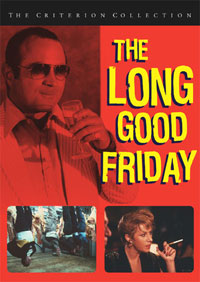Malice

Guilty pleasures - or in the book world they are often referred to as beach books or popcorn or even junk food - you enjoy eating them or watching them or reading them but they have no nutritional content to them. The late '80s and early '90s were full of serviceable guilty pleasures, usually in the guise of thrillers. The genre hit its critical peak with the overrated Michael Douglas flick Fatal Attraction in '87 (that movie actually got a best picture Oscar nomination and that was back when they had a mere five elite films nominated). Superstar bum-flasher Douglas continued his reign as victim to the ladies lust, hitting his apex in '92 with the sleazy homophobia of Basic Instinct. Of course director Paul Verhoeven had done the same story much more effectively with his Dutch film, The 4th Man, ten years earlier.
Video cassettes and cable helped make the suspense genre a staple of movie watchers' subconscious. You may or may not remember the titles, but the films were popular in some form or another, ingested like a bag of potato chips, enjoyed that evening and forgotten the next day. Blink, Color Of Night, Dream Lover, The Last Seduction, Jennifer Eight, The Final Analysis, Jagged Edge, Suspect, Pacific Heights, blah blah blah, the list of title goes on. But for some reason there is one that I always remember. I guess I enjoyed it more than the others...Malice.
Continue ReadingWinter Kills

William Richert’s first feature was every young filmmaker’s dream. He was to direct Winter Kills, a big budget thriller based on a novel from best-selling author Richard Condon, starring Hollywood stars Jeff Bridges, John Huston, Eli Wallach, and Anthony Perkins as well as international luminaries Toshiro Mifune and Tomas Milian. He assembled a crew of professionals including Vilmos Szigmond, the cinematographer of McCabe & Mrs. Miller, Deliverance, and Close Encounters of the Third Kind, and Robert Boyle, the production designer on three Hitchcock films. And he started dating the film’s female lead, model Belinda Bauer. On its release Winter Kills received rave reviews from The New York Times and The New Yorker, yet after a week it was pulled from theaters. What sinister force didn’t want the public to see it?
In the film Bridges plays the only scion of a wealthy and well-connected family with an enduring involvement in politics. 19 years ago his brother was the President of the United States, until he was shot by an unknown sniper. Now, the location of the murder weapon is uncovered and Bridges must use the money and power that he has distanced himself from. Huston plays his eccentric, megalomaniac father and Perkins is the enigmatic “man behind the curtain” who might be the only one who knows the truth. The pace of Winter Kills is unrelenting, yielding more secrets and false leads with every twist, then swiftly doubling back and denying them. In its desire to reconcile the characters’ contradictory testimonies, the film quickly becomes a black comedy satirizing the ineffectual inquiry into the JFK assassination and its consequent conspiracy theories, but the rising body count and spasms of sudden violence keep Winter Kills a riveting thriller as well.
Continue ReadingRosemary's Baby

Along with the original versions of The Texas Chainsaw Massacre and Night Of The Living Dead, Rosemary’s Baby was one of the most frightening film-watching experiences of my life. And what really makes Rosemary’s Baby an even more special film is that if you took the "horror" elements out of it and you just had a film about a young couple in New York City in the late '60s it would still be completely entertaining. It’s a great lesson in storytelling: interesting characters first will make the "horror" more powerful.
The perfectly taut screenplay credited to director Roman Polanski follows Ira Levin’s novel almost scene for scene, line for line. There is not a loose shred in the script, which may sound simple enough on paper - newlyweds Guy (John Cassavetes) and Rosemary (Mia Farrow) move into an old Manhattan building where they become friends with the elderly couple next door (Ruth Gordon and Sidney Blackmer). Slowly the pregnant Rosemary begins to suspect that they and their creaky posse are part of a witch’s covenant of devil worshippers who are hungry for her unborn baby.
Continue ReadingSexy Beast

After spending lives in ill repute, Gal and Aitch, along with their wives, have found peace in the hills of Spain, until a former colleague crashes the party and all hell breaks loose.
Ray Winston (The Departed) plays “Gal,” a soft-spoken teddy bear of a man just trying to enjoy a calm life in Spain with his ex-porn star wife. As much as he wants a peaceful existence, the London mob has no plans to let this skilled safecracker walk away from the show.
Continue ReadingA History of Violence

Tom Stall is a peaceful diner owner living in a small town with his wife and children until one day a group of dangerous men show up, unwinding a mystery.
Based on a graphic novel by John Wagner and Vincent Locke, Josh Olson’s subtle screenplay is taut, raw and engrossing. Because the subject matter is so dark and without a hint of the supernatural, it would be hard to tell it came from a comic book. But all in all, it is one of the best adaptations from the medium to hit the big screen so far.
Continue ReadingCapricorn One
 How's this for an all-star 1970s line-up? Capricorn One is a kinda sci-fi, conspiracy minded, political-thriller written and directed by Peter Hyams (Peeper, Outland and the similarly themed The Star Chamber) starring the once popular Elliott Gould as a pesky reporter (as if his Philip Marlowe from Robert Altman’s The Long Goodbye wanted to grow up to be Woodward & Bernstein). The three innocent astronauts with their lives on the line are played by the manly James Brolin (Westworld), the nerdy Sam Waterson (The Killing Fields) and ex-football star O.J. Simpson who became famous for... well you know. The astronauts wives include Brenda Vaccaro (Midnight Cowboy) and Denise Nicholas (Blackula). Hal Holbrook (Deep Throat from All The President’s Men) is the conniving government bureaucrat doing his authoritative three-piece-suit thing. Listed and boxed in the credits as special guest stars is the underrated and strangely attractive Karen Black (Five Easy Pieces) and Telly Savalas, taking a break from TV's Kojak. The rest of the cast is rounded out with other TV fixtures from the decade: Robert Walden, David Huddleston and David Doyle (Bosley from Charlie’s Angels). It’s not just the cast or the haircuts that make Capricorn One so beautifully '70s, it's the paranoia that has come to define so much of the work of the decade.
How's this for an all-star 1970s line-up? Capricorn One is a kinda sci-fi, conspiracy minded, political-thriller written and directed by Peter Hyams (Peeper, Outland and the similarly themed The Star Chamber) starring the once popular Elliott Gould as a pesky reporter (as if his Philip Marlowe from Robert Altman’s The Long Goodbye wanted to grow up to be Woodward & Bernstein). The three innocent astronauts with their lives on the line are played by the manly James Brolin (Westworld), the nerdy Sam Waterson (The Killing Fields) and ex-football star O.J. Simpson who became famous for... well you know. The astronauts wives include Brenda Vaccaro (Midnight Cowboy) and Denise Nicholas (Blackula). Hal Holbrook (Deep Throat from All The President’s Men) is the conniving government bureaucrat doing his authoritative three-piece-suit thing. Listed and boxed in the credits as special guest stars is the underrated and strangely attractive Karen Black (Five Easy Pieces) and Telly Savalas, taking a break from TV's Kojak. The rest of the cast is rounded out with other TV fixtures from the decade: Robert Walden, David Huddleston and David Doyle (Bosley from Charlie’s Angels). It’s not just the cast or the haircuts that make Capricorn One so beautifully '70s, it's the paranoia that has come to define so much of the work of the decade.
While a script about a manned rocket ride to Mars that may or may not actually happen sounds coincidentally 2012, Capricorn One is all 1978. Following on the heels of political assassinations, the Vietnam war and Nixon’s Watergate scandal, Hollywood was hot for covert government and corporate dirty work, represented with a number of conspiracy driven films as diverse as All The President’s Men, The Conversation, Winter Kills, The Parallax View, Chinatown, Executive Action and Three Days of the Condor. The '70s sci-fi genre into which Capricorn One sorta falls had similar themes with flicks like Westworld, Invasion Of The Body Snatchers and Silent Running. Of course both genres were basically driven out of business the year before Capricorn One was released when Star Wars was unleashed on the world. Along with the success of Rocky, Hollywood was becoming less interested in the cynicism of the past and now looking for heroes for the future (also ending the mega-stardom of an actor like Gould who specialized in rumpled losers.)
The Long Good Friday
 The DVD box has a blurb from an old review that compares it to The Godfather, but in all actuality the very British pulp gangster flick The Long Good Friday is much closer in spirit to TV’s The Sopranos. Matter of fact, it’s fair to say that The Sopranos is a direct descendent of this crime and politics saga. Bob Hoskins, in a brilliant, star-making performance, carries the film as Harold Shand and, like Tony Soprano, he’s a two-bit street punk who has worked himself up the criminal food chain; instead of New Jersey he runs London. Like Tony, Harold fancies himself an ambitious businessman. He thinks the gaudy opulence he surrounds himself with gives him class and makes him legitimate. Also like the TV show, his wife plays a key role in his life - she’s almost a First Lady of the underworld. Unlike Tony, Harold seems to be devoted to his wife Victoria (played by the great Helen Mirren, just hitting her stride in her important run of great film and TV roles). She seems to be a little more posh than him and like his fancy boat, helps him feel like he’s arrived. Harold also has a crew of devoted lieutenants, the younger ones treat him like a father figure. Although maybe what makes these husky, bearish gangsters resemble each other most is the complicated rage that they desperately try to control. Even when they know revealing their true sociopathic nature can be bad for business, they just can’t help themselves.
The DVD box has a blurb from an old review that compares it to The Godfather, but in all actuality the very British pulp gangster flick The Long Good Friday is much closer in spirit to TV’s The Sopranos. Matter of fact, it’s fair to say that The Sopranos is a direct descendent of this crime and politics saga. Bob Hoskins, in a brilliant, star-making performance, carries the film as Harold Shand and, like Tony Soprano, he’s a two-bit street punk who has worked himself up the criminal food chain; instead of New Jersey he runs London. Like Tony, Harold fancies himself an ambitious businessman. He thinks the gaudy opulence he surrounds himself with gives him class and makes him legitimate. Also like the TV show, his wife plays a key role in his life - she’s almost a First Lady of the underworld. Unlike Tony, Harold seems to be devoted to his wife Victoria (played by the great Helen Mirren, just hitting her stride in her important run of great film and TV roles). She seems to be a little more posh than him and like his fancy boat, helps him feel like he’s arrived. Harold also has a crew of devoted lieutenants, the younger ones treat him like a father figure. Although maybe what makes these husky, bearish gangsters resemble each other most is the complicated rage that they desperately try to control. Even when they know revealing their true sociopathic nature can be bad for business, they just can’t help themselves.
With The Long Good Friday, British television director John Mackenzie, on a very modest budget, inexplicably made probably the best English gangster film ever. Inexplicable because though the guy continued to work in film and TV for decades he never made anything else of note. Nor did screenwriter Barrie Keeffe, who also came from the small screen, and who, after the acclaim for The Long Good Friday, never had another screenplay produced (he went back to TV). These two guys, along with the strong collaboration from Hoskins (who also came from TV at the time), would create such a special little gem that would help usher in a mini resurgence in home grown independent British film in the '80s (British film meaning paid for by the pound, not the dollar).
U-Turn

"Bobby Cooper" (Penn) is a wandering gambler whose car breaks down in some lost Southwestern town where he’s pulled into a web of lies, deceit, and murder.
Oliver Stone (W) directs one of his most re-watchable and entertaining films in a long and ambitious career. He creates a sinisterly fun Neo-Noir within the confines of a funky cowpoke town. The film maintains a strong mood throughout, with special attention paid to the details, and at a pace that never lets up.
Continue ReadingAtlantic City

With Atlantic City the then 67-year-old Burt Lancaster gave the performance of his five decade long film career. And what an incredible career it was. As Lou, an over-the-hill, broken down loverboy who dreams of one big score and still fancies himself a player, telling tales of one-time peripheral ties to the mob, Lancaster is able to use the physical and emotional gifts that have defined him his whole career. Like many of his characters, Lou is all buff and gusto on the outside, while sensitive and gooey on the inside.
Lou spends his days running numbers and looking after his sugar-mama Grace (Kate Reid), a decrepit ex-mob moll who came to Atlantic City during WWII for a Betty Grable look-a-like contest. The highlight of his life is lusting after his younger neighbor, Sally, a casino waitress and wanna-be blackjack dealer (an outstanding Susan Sarandon). Lou peeps at her through the windows as she gets topless and erotic with a lemon, rubbing it on herself to get rid of the restaurant's clam smell. When Sally’s lout ex-husband stashes a huge bag of cocaine in his pad and then gets killed by mobsters, Lou is able to woo Sally and become the true gangster he always fantasized about being. Meanwhile the city of Atlantic City in the background represents the foreground - it’s an aging, crumbling dinosaur being torn down by developers and being rebuilt with slick new buildings.
Continue ReadingEyes Of Laura Mars

Written by the ice-cool John Carpenter and released about two months prior to Halloween, this metaphysical serial murder mystery falls gently in the middle of the writer's spectrum of work, lying somewhere in between The Fog's biblical-styled justice from beyond the grave and the dystopian realism of Escape From New York. Also on board is soon-to-be-Empire Strikes Back-director, Irvin Kirshner. The pairing of these two talents ends up giving the film that classic 1970s American paranoid vibe with a zesty twist of the paranormal.
I watched this in the midst of a Faye Dunaway kick and she doesn’t dazzle, but isn’t disappointing in the titular role. Laura Mars is a controversial fashion photographer. Laura has her fair share of critics, as well as devotees. Depicting female models in strikingly violent city landscapes nonetheless brings her fame. (Icon Helmut Newton provided the actual photographs.) Out of the clear blue sky, she gets a psychic flash and witnesses a grisly murder from the killer’s point of view. Wait, she knows the victim! Terrified, shocked, and confused she ends up falling into cahoots with Detective John Neville (Tommy Lee Jones). The visions continue (Laura knows each victim) and the two run through the picture adding up the clues. All the colorful characters are suspect, including Raul Julia who is unpleasantly excellent as Laura’s ex-husband. Rene Auberjonois is also fabulous as Laura’s assistant. The ending, we’ll say, is classic Carpenter.
Continue Reading




